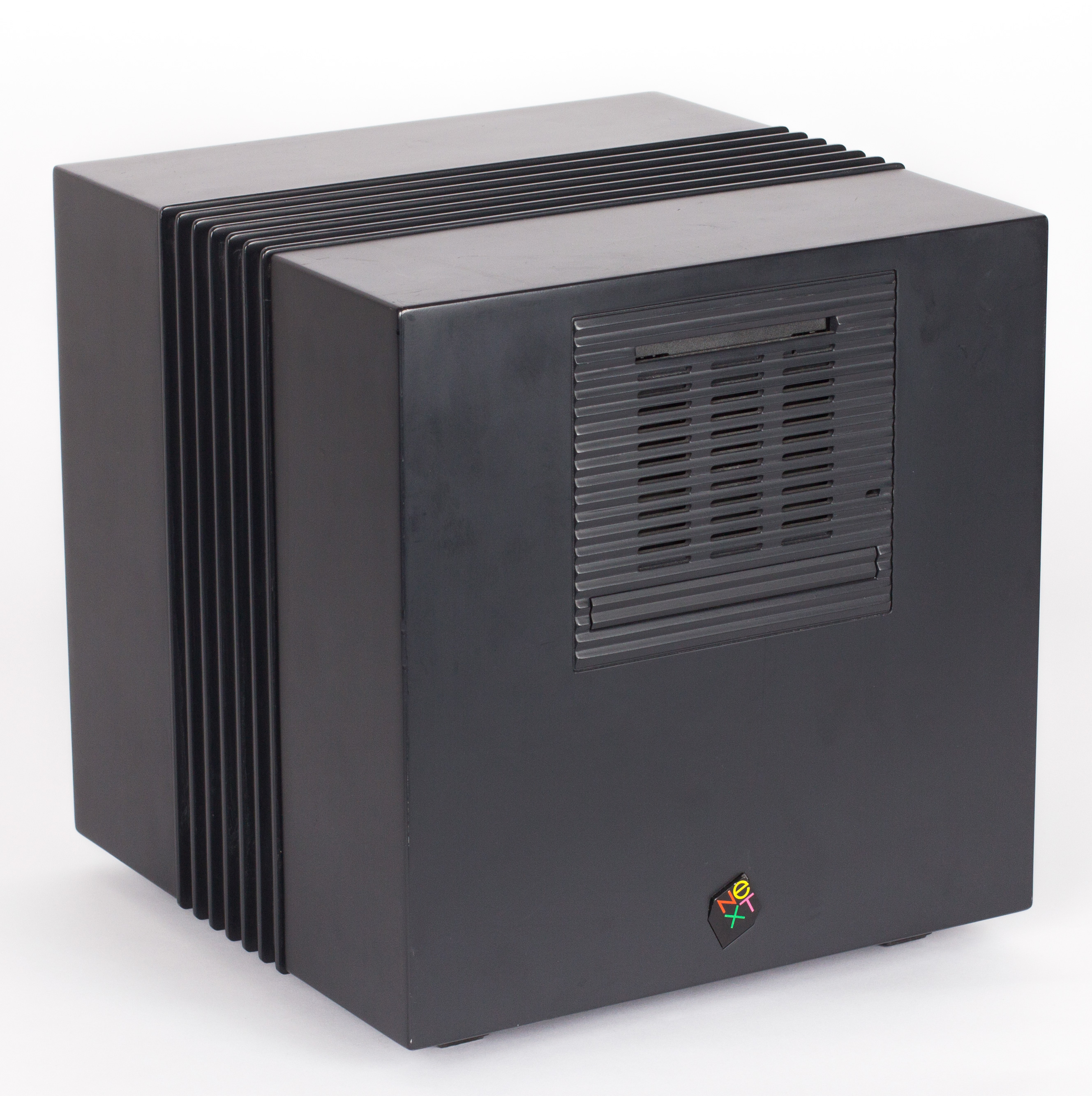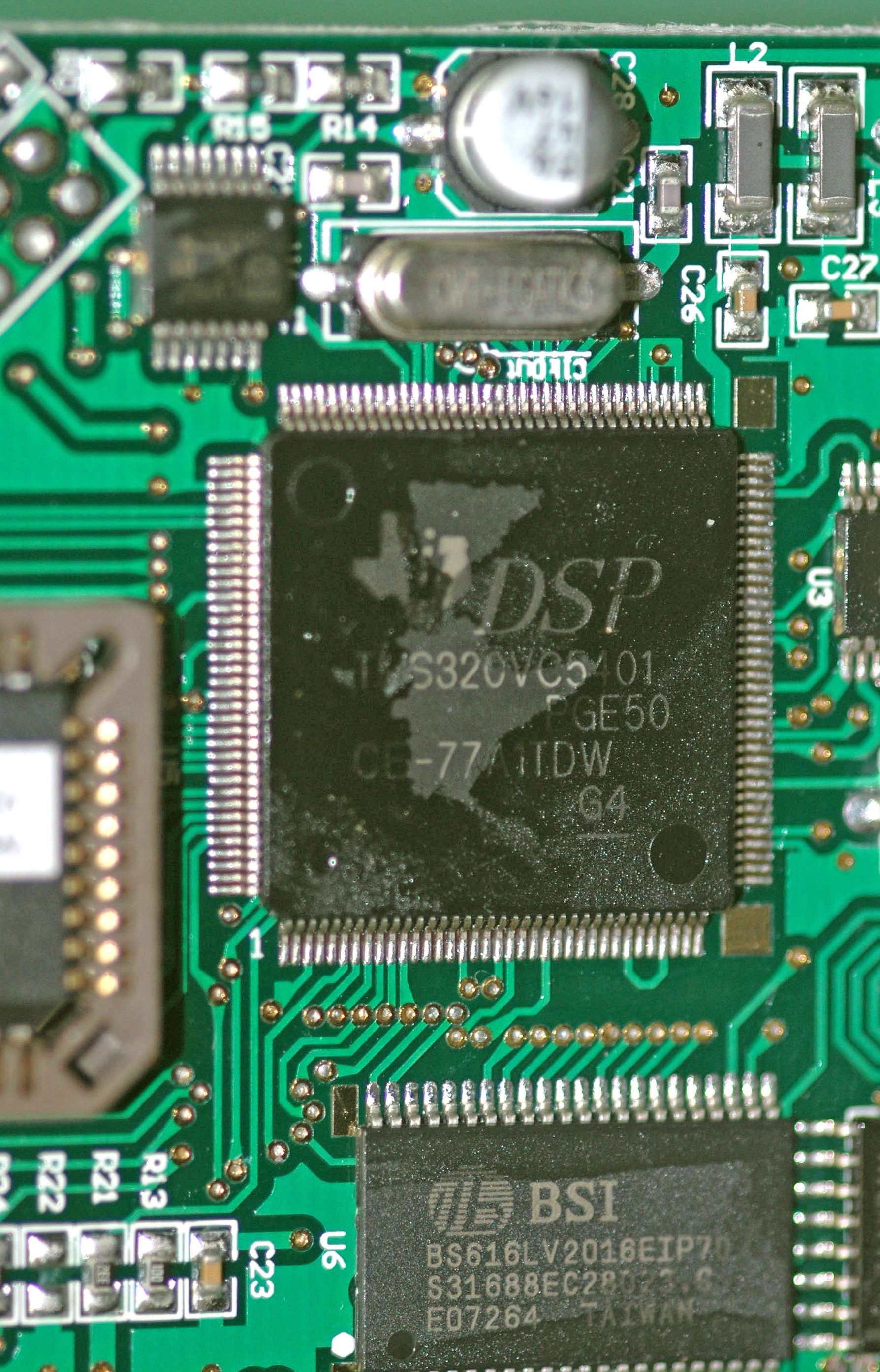|
NeXTcube
The NeXTcube is a high-end workstation computer developed, manufactured, and sold by NeXT from 1990 until 1993. It superseded the original NeXT Computer workstation and is housed in a similar cube-shaped magnesium enclosure, designed by frog design. The workstation runs the NeXTSTEP operating system and was launched with a list price. Hardware The NeXTcube is the successor to the original NeXT Computer. It differs from its predecessor in having a 68040 processor, a hard disk in place of the magneto-optical drive, and a floppy disk drive. NeXT offered a 68040 system board upgrade (and NeXTSTEP 2.0) for . A 33 MHz NeXTcube Turbo was later produced. NeXT released the NeXTdimension for the NeXTcube, a circuit board based on an Intel i860 processor, which offers 32-bit PostScript color display and video-sampling features. The Pyro accelerator board increases the speed of a NeXTcube by replacing the standard 25 MHz processor with a 50 MHz one. Specifications * ... [...More Info...] [...Related Items...] OR: [Wikipedia] [Google] [Baidu] |
NeXTcube Turbo
The NeXTcube Turbo is a high-end workstation computer developed, manufactured and sold by NeXT. It superseded the earlier NeXTcube workstation and is housed in the same cube-shaped magnesium enclosure. The workstation runs the NeXTSTEP operating system. Hardware The NeXTcube Turbo is a development of the earlier NeXTcube. It differs from its predecessor in having a 33 MHz Motorola 68040, 68040 processor. The NeXTdimension board can also be used in the NeXTcube Turbo. There was also a very rare accelerator board known as the Nitro; between 5 and 20 are estimated to have been made. It increased the speed of a NeXTcube Turbo by replacing the standard 33 MHz processor with a 40 MHz one. Specifications * Display: 1120×832 17" grayscale NeXT MegaPixel Display, MegaPixel Display * Operating System: NeXTSTEP, OPENSTEP * CPU: 33 MHz 68040 with integrated floating-point unit * Digital Signal Processor: 25 MHz Motorola DSP56001 * RAM: 16 MB, expandable to 128 M ... [...More Info...] [...Related Items...] OR: [Wikipedia] [Google] [Baidu] |
NeXT Computer
NeXT Computer (also called the NeXT Computer System) is a workstation computer that was developed, marketed, and sold by NeXT Inc. It was introduced in October 1988 as the company's first and flagship product, at a price of , aimed at the higher-education market. It was designed around the Motorola 68030 CPU and 68882 floating-point coprocessor, with a clock speed of . Its NeXTSTEP operating system is based on the Mach microkernel and BSD-derived Unix, with a proprietary GUI using a Display PostScript-based back end. The enclosure consists of a 1-foot () die-cast magnesium cube-shaped black case, which led to the machine being informally referred to as "The Cube". The NeXT Computer was renamed NeXTcube in a later upgrade. The NeXTstation, a more affordable version of the NeXTcube, was released in 1990. Launch The NeXT Computer was launched in October 1988 at a lavish invitation-only event, " NeXT Introduction – the Introduction to the NeXT Generation of Computers for ... [...More Info...] [...Related Items...] OR: [Wikipedia] [Google] [Baidu] |
NeXTdimension
NeXTdimension (ND) was an accelerated 32-bit color board manufactured and sold by NeXT from 1991 that gave the NeXTcube color capabilities with PostScript planned. The NeXTBus (NuBus-like) card was a full size card for the NeXTcube, filling one of four slots, another one being filled with the main board itself. The NeXTdimension featured S-Video input and output, RGB output, an Intel i860 64-bit RISC processor at 33 MHz for Postscript acceleration, 8 MB main memory (expandable to 64 MB via eight 72-pin SIMM slots) and 4 MB VRAM for a resolution of 1120x832 at 24-bit color plus 8-bit alpha channel. 1990, U-M Computing News, Volume 5, Page 9, ''...NeXTdimension board provides 32-bit color, and includes an Intel i860 g ... [...More Info...] [...Related Items...] OR: [Wikipedia] [Google] [Baidu] |
Motorola 56000
The Motorola DSP56000 (also known as 56K) is a family of digital signal processor (DSP) chips produced by Motorola Semiconductor (later Freescale Semiconductor then NXP) starting in 1986 with later models are still being produced in the 2020s. The 56k series was quite popular for a time in a number of computers, including the NeXT, Atari Falcon030 and SGI Indigo workstations all using the 56001. Upgraded 56k versions are still used in audio equipment, radar systems, communications devices (like mobile phones) and various other embedded DSP applications. The 56000 was also used as the basis for the updated 96000, which was not commercially successful. Technical description The DSP56000 uses fixed-point arithmetic, with 24-bit program words and 24-bit data words. It includes two 24-bit registers, which can also be referred to as a single 48-bit register. It also includes two 56-bit accumulators, each with an 8-bit "extension" (aka headroom); otherwise, the accumulators are ... [...More Info...] [...Related Items...] OR: [Wikipedia] [Google] [Baidu] |
Digital Signal Processor
A digital signal processor (DSP) is a specialized microprocessor chip, with its architecture optimized for the operational needs of digital signal processing. DSPs are fabricated on MOS integrated circuit chips. They are widely used in audio signal processing, telecommunications, digital image processing, radar, sonar and speech recognition systems, and in common consumer electronic devices such as mobile phones, disk drives and high-definition television (HDTV) products. The goal of a DSP is usually to measure, filter or compress continuous real-world analog signals. Most general-purpose microprocessors can also execute digital signal processing algorithms successfully, but may not be able to keep up with such processing continuously in real-time. Also, dedicated DSPs usually have better power efficiency, thus they are more suitable in portable devices such as mobile phones because of power consumption constraints. DSPs often use special memory architectures that ... [...More Info...] [...Related Items...] OR: [Wikipedia] [Google] [Baidu] |
NeXTSTEP
NeXTSTEP is a discontinued object-oriented, multitasking operating system based on the Mach kernel and the UNIX-derived BSD. It was developed by NeXT Computer in the late 1980s and early 1990s and was initially used for its range of proprietary workstation computers such as the NeXTcube. It was later ported to several other computer architectures. Although relatively unsuccessful at the time, it attracted interest from computer scientists and researchers. It hosted the original development of the Electronic AppWrapper, the first commercial electronic software distribution catalog to collectively manage encryption and provide digital rights for application software and digital media, a forerunner of the modern "app store" concept. It is the platform on which Tim Berners-Lee created the first web browser, and on which id Software developed the video games ''Doom'' and '' Quake''. In 1996, NeXT was acquired by Apple Computer to succeed the classic Mac OS, by merging NeXTSTEP ... [...More Info...] [...Related Items...] OR: [Wikipedia] [Google] [Baidu] |
Frog Design
frog (styled as ''"frog, part of Capgemini Invent"'') is a global creative and design consultancy founded in 1969 by industrial designer Hartmut Esslinger in Mutlangen, Germany, where it was initially named “esslinger design”. Soon after the company moved to Altensteig, Germany, and then opened a new studio in Palo Alto, California, and ultimately to its current headquarters in San Francisco, California. The company has studios in North and Central America, Europe, and Asia. The name was changed to frog design in 1982 (the name originating from an acronym for Esslinger's home country, the Federal Republic of Germany; it was originally styled exclusively in lower-case as an expression of its belief in a democratic place of work, where ideas are openly and freely shared, and in opposition to the capitalization of nouns in German). The brand was once again restyled as frog in 2011 to signify an expanded portfolio of services that included strategy and organization activation. ... [...More Info...] [...Related Items...] OR: [Wikipedia] [Google] [Baidu] |
NetBSD
NetBSD is a free and open-source Unix operating system based on the Berkeley Software Distribution (BSD). It was the first open-source BSD descendant officially released after 386BSD was forked. It continues to be actively developed and is available for many platforms, including servers, desktops, handheld devices, and embedded systems. The NetBSD project focuses on code clarity, careful design, and portability across many computer architectures. Its source code is publicly available and permissively licensed. History NetBSD was originally derived from the 4.3BSD-Reno release of the Berkeley Software Distribution from the Computer Systems Research Group of the University of California, Berkeley, via their Net/2 source code release and the 386BSD project. The NetBSD project began as a result of frustration within the 386BSD developer community with the pace and direction of the operating system's development. The four founders of the NetBSD project, Chris Demetriou, The ... [...More Info...] [...Related Items...] OR: [Wikipedia] [Google] [Baidu] |
NeXT MegaPixel Display
The NeXT MegaPixel Display was a range of CRT-based computer monitors manufactured and sold by NeXT for the NeXTcube and NeXTstation workstations, designed by Hartmut Esslinger/Frog Design Inc. Description The original MegaPixel Display was a monochrome 17" monitor displaying 4 brightness levels (black, dark gray, light gray and white) in a fixed resolution of 1120 x 832 at 92 DPI (just shy of a true megapixel at 931,840 total pixels) at 68 Hz. It integrated a mono microphone, mono speaker, stereo Stereophonic sound, or more commonly stereo, is a method of sound reproduction that recreates a multi-directional, 3-dimensional audible perspective. This is usually achieved by using two independent audio channels through a configuration ... RCA sockets, a 3.5 mm headphone socket and a socket for the keyboard (which in turn provided a socket for the mouse). A unique feature was that the monitor was connected to the computer by a single 6 foot cable which pro ... [...More Info...] [...Related Items...] OR: [Wikipedia] [Google] [Baidu] |


